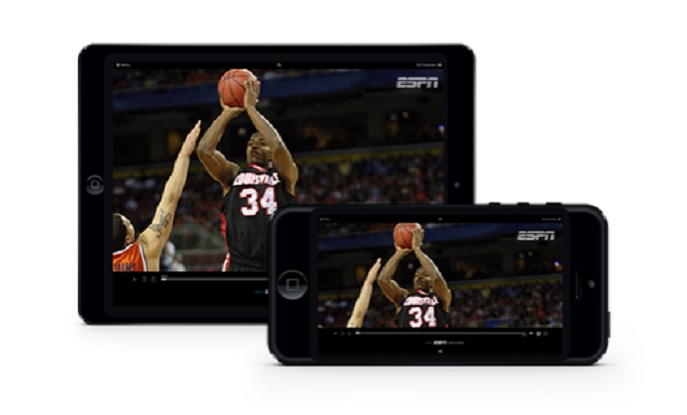We’re just a few months into 2015, but it already seems that this is the Year of the Streaming Service. You’ve undoubtedly heard the news: HBO Now is arriving soon; NBCU has plans to launch a comedy-focused subscription video service; Sling TV is adding AMC and IFC to its channel lineup; CBS All Access is live, and Showtime’s standalone service could arrive in 2015.
It doesn’t end there. Sports fans in particular have a reason to rejoice, for two reasons. First, Dish’s Sling TV will make ESPN and ESPN2 available without a cable package for just $20 per month. Second, NBC’s decision to livestream the Super Bowl to anyone with an Internet connection – regardless of whether they are a cable subscriber, cord-cutter, or cord-never – shows where the industry is headed.
Many have described the latter two moves as a cord-cutters’ dream come true. After all, we’ve been hearing for years that sports programming is the linchpin keeping today’s cable structure in place, and both ESPN and the Super Bowl are core components of that argument.
So, if live sports are finally available without cable, that means the bundle is dead. Right?
I wouldn’t sound the death knell just yet. A hundred million cable subscribers aren’t going to disappear overnight — after all, an industry shift of this magnitude moves like a glacier: slowly, but with lasting effects. We can’t, however, ignore the significance of these developments. I would argue that the evolution we’ve seen, both as consumers and industry players, is about to pick up some speed and give way to many more changes on the horizon.
More choices and more customized packages
Sling TV’s launch in January is only the beginning of what I see as an industry shift away from the “one-package-fits-all” approach in favor of packages tailored to different viewing styles, perhaps including a la carte options as well. With HBO and Showtime also poised to offer standalone streaming services, I wouldn’t be surprised if they each end up as a Sling TV add-on for $10 per month.
Acquisition of live sports rights by a major digital player
About a year ago, the media was in a frenzy over the rumor that Google might buy the rights to NFL Sunday Ticket. Many thought that separating live sports from the cable bundle and making it available on a digital platform would put TV on a completely different trajectory. For example, had Google won the rights, it could have offered NFL Sunday Ticket to consumers with every Chromecast purchase, and if that was the only streaming device to offer live sports, we might have seen one of two results: 1) Roku, Apple, and Amazon would be forced to make similar deals with other sports leagues to compete, or 2) they would be effectively shut out of the market. And then a chain reaction would begin – perhaps the rights to MLB, NBA, or NHL games would be sold to the highest bidder, along with one-off events like the Olympics and World Cup.
However, as the industry tests the livestreamed sports waters, consumers are faced with an inconsistent user experience. Take NBC’s Super Bowl livestream – according to Slate, while it drew in about 1.3 million simultaneous viewers, it also experienced significant lag time. Compare that to the experience Verizon subscribers had on NFL Mobile, which consistently maintained a near-real-time stream of the big game.
For live sports streaming to move the needle, the industry needs to not only consistently nail delivery but also make the digital experience more desirable than TV. Implementing real-time replays or personalized playlists would give viewers an additional incentive to make the change.
Consolidation of the streaming device market
It’s a general rule of thumb that consumers benefit if there are more options available. After all, competition is evidence of a healthy market, as it drives down prices and allows buyers to vote with their dollars. But when it comes to consumer electronics, the current streaming device market is far too crowded: Google Chromecast, Apple TV, Roku’s Streaming Players and Streaming Stick, Amazon Fire TV and Fire TV Stick — not to mention connected TVs — all perform virtually the same function. While the price for each device varies, the content is not differentiated enough to offer clear advantages for one product over another.
I predict that once more options enter the market, we’ll see consolidation of the streaming boxes that are currently available. Fewer devices with more compelling content offerings will rise to the top.
Emergence of a new bundle
Will Richmond of VideoNuze noted another benefit of the bundle: simplicity. With must-see content becoming more and more fragmented, a viewer needs to subscribe to multiple services to watch her favorite shows: Netflix for “House of Cards,” Amazon for “Transparent,” Sling TV for “House Hunters,” and so on, which means the cost becomes increasingly prohibitive. I predict that a new digital bundle that is both cost-effective and easy to manage will emerge. Consumers need a solution that will quickly calculate the available content and associated costs for each streaming service (not unlike this quiz), or one that offers prepackaged digital bundles to consumers so that they can make all of their purchases at once.
As Sling TV attracts the attention of millennials and livestreaming of major sports events grows to become an expectation rather than an option, we’ll see the a faster dismantling of the cable bundle. Only time will tell what the uptake is, but with an accelerated evolution, cable as we know it is increasingly vulnerable.
David Mowrey is VP of Product Management at Clearleap.
VentureBeat's mission is to be a digital town square for technical decision-makers to gain knowledge about transformative enterprise technology and transact. Learn More

